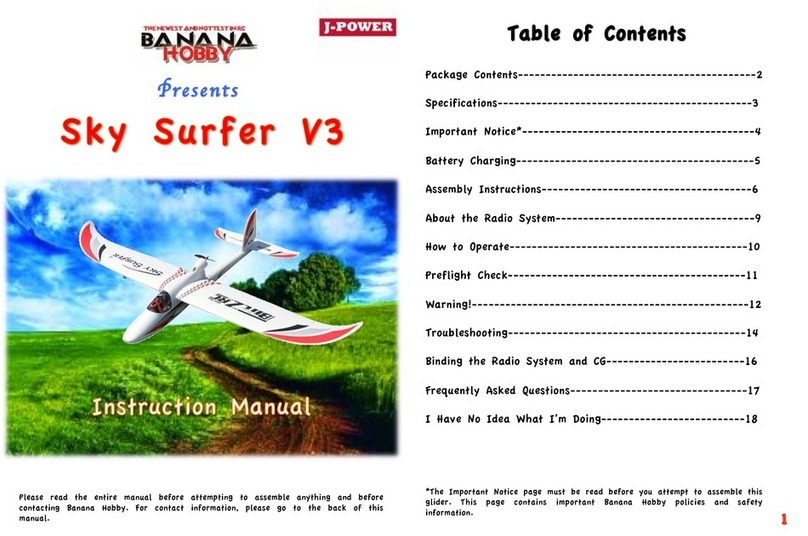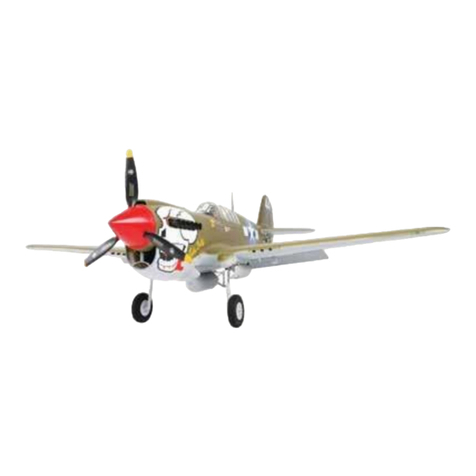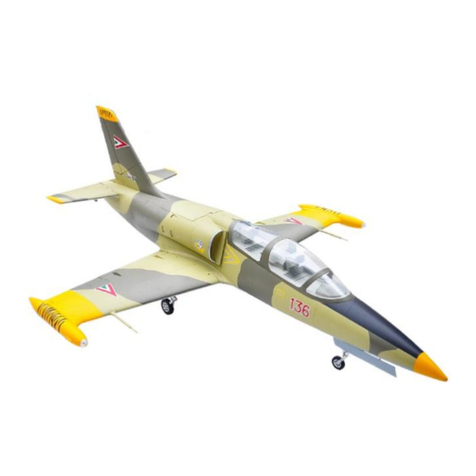
2
Table of Contents
Safety Notices................................................................................................................................................................... 1
Model Specifications ........................................................................................................................................................ 2
Package Contents ............................................................................................................................................................. 2
Assembly and Pre-Flight Check........................................................................................................................................ 2
Function Check ................................................................................................................................................................. 6
Center of Gravity Check ................................................................................................................................................... 9
Flight ............................................................................................................................................................................... 10
Maintenance................................................................................................................................................................... 11
Spare Parts List ............................................................................................................................................................... 12
1: Safety Notices
This product is not a toy. Improper operation may cause bodily injury or property damage. It is
highly suggested for beginners new to this hobby to seek help from an experienced RC pilot.
1.1 Please follow all lithium-polymer battery safety procedures and warnings. If you are new to
using Li-Po batteries, be sure to research their specific handling. Do not puncture the
battery. Do not store the battery fully charged as it will lose its capacity overtime and
discharge. Do not overcharge or over discharge the battery. Keep the battery away from
flammable materials. Do not charge the lithium polymer battery unattended. Monitoring the
Li-Po charge and checking the charge process is highly suggested. Remember, Lithium
Polymer batteries should not get warm during the charging process. If the battery becomes
warm or hot during charging, please disconnect the battery from the charger immediately.
Consult with the dealer for more information if needed.
1.2 To avoid injury and damage, do not operate this model in a crowded space, in the presence
of high voltage cables, and keep away from buildings. Be sure to follow local, state-wide or
country-wide rules and regulations.
This model and its electronic components are not suitable for flying in rainy or windy
weather. Avoid flying when wind speed reaches 6 MPH or higher.
1.3 To avoid damage or bodily harm, the propeller must be undamaged and fastened. Do not
attempt to repair broken propellers.
1.4 Make sure to use fully charged or brand new AA batteries in the transmitter/remote control
to prevent signal loss. If you are using your own transmitter system, please be sure to fully
charge your transmitter if applicable.
1.5 To begin operation, the transmitter must be turned on first with the throttle stick set to its
lowest possible position. Next, the V-22 MUST BE on a flat surface. Plug in the battery to
the V-22 and allow at least 5 seconds for the Flight Control Board unit to initialize before
picking up the V-22 and taking flight. After flight, always turn off the model first by
unplugging the battery before turning off the transmitter.
1.6 Never operate this model within the proximity of an airport without prior permission
or you will be fined, and potentially arrested for safety violations. U.S. RC pilots, more
details here: https://www.faa.gov/uas/getting_started/fly_for_fun/
1































